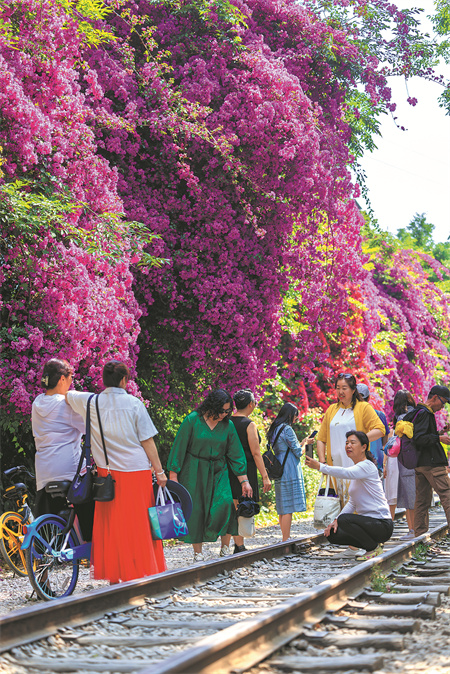

Close connection
The lives of locals have been closely connected to the fate of the railway. For a long time, the railway was the only means of transportation for locals to commute in the mountains. But passenger services stopped in 2003 after new transportation infrastructure such as roads and modern railways became available in Honghe, resulting in the sharp drop in the number of people using the narrow-gauge train service, which is much slower. Thus, the glory days of the railway were gone. Many stations had been closed, leaving only 17 still in use.
While freight trains still stop at Zhicun station for services, all operations at Bisezhai station, which was once a vital stop on the Yunnan-Vietnam Railway, ceased in 2010. It has now become a tourist site dubbed "a piece of Paris of the East".
People can walk on the station platform adorned with louvered windows and imported Paul Garnier clocks. One of the century-old water towers, which was essential to the steam locomotives that needed water and coal to function, still stands next to the main entrance of the station.
Also, iconic buildings at the train station have been well preserved, including the customs building, post office, canteen and engineering offices.
Surprisingly, it even has China's first clay tennis court. The facilities were a reminder of how busy and important the station once was.
In 1940, to prevent Japan's invasion of China via the railway, the railway track between Bisezhai station and Hekou station was deliberately destroyed. The Chinese government later restored the track after taking over operations of the railway in 1950.
People can learn more about the history of the Yunnan-Vietnam Railway at the Yunnan Railway Museum built on the old Kunming North Station, the terminus of the railway. The French-style building is right next to the new and futuristic Kunming North Station offering people high-speed rail services, a representation of history meeting modernity.